OOP Object Oriented Programming In PHP 7
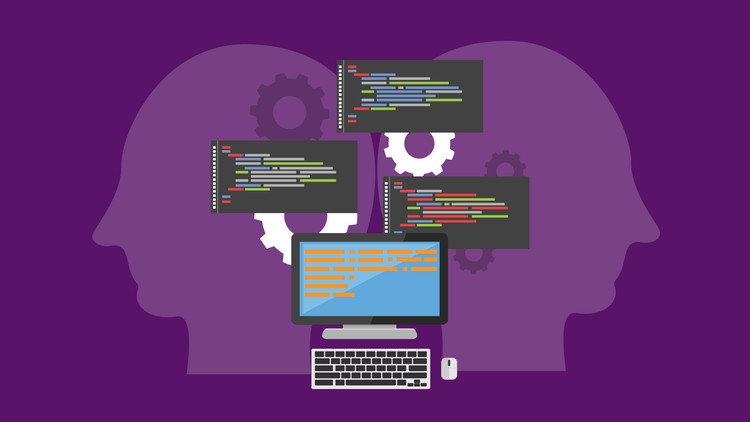
Why take this course?
24th section delves into the topic of namespaces, which are a part of PHP's support for defining and using "namespaces". This feature allows you to encapsulate items such as classes, interfaces, functions, and constants. Namespaces help in avoiding naming collisions by providing a mechanism for disambiguating globally unique class and function names.
Key points in this section include:
- Understanding the structure of namespaces, how to declare them, and how they affect the global namespace.
- Exploring how to use backslashes to refer to classes and functions in a namespace.
- Learning how PHP resolves class names when using namespaces.
- Discussing the
usestatement for importing namespaced classes into your code. - Understanding how to alias namespaced classes with the
asclause within theusestatement. - Exploring the
\namespace, which is a global namespace and can be used when you need to refer to global objects without including their full namespace path. - Learning how to access static methods and properties in namespaces.
- Discussing the best practices for organizing your code into namespaces.
- Understanding the difference between 'use' and 'use with alias' directives.
- Exploring how autoloading works with namespaces, and how to set it up using Composer.
By the end of this section, you should have a clear understanding of how to organize your code using namespaces and how to access namespaced elements both within the same namespace and from other namespaces. You'll also learn about the spl_autoload_register() function, which allows you to register autoload functions that PHP will call automatically when it encounters a class or interface name it cannot resolve immediately.
In the 25th section, we'll cover the concept of reflection in PHP. Reflection is the ability to inspect classes, methods, properties, and extensions at runtime. This is particularly useful for debugging or dynamically manipulating code elements at runtime.
Key points in this section include:
- Understanding what reflection is and its benefits.
- Learning about the
ReflectionClass,ReflectionMethod, andReflectionPropertyclasses provided by PHP for inspecting classes, methods, and properties, respectively. - Exploring how to use these classes to get information such as whether a method is static, if a property is public, or what parameters a constructor accepts.
- Discussing how reflection can be used to dynamically modify classes, methods, and properties, including setting class constants, modifying method parameters, and invoking protected or private methods.
- Learning about the potential pitfalls of using reflection, such as performance overhead and the inability to reflect over namespaced objects without proper handling of their fully qualified names.
By the end of this section, you should understand how to use reflection to inspect and manipulate PHP code elements at runtime, enabling you to create more flexible and dynamic applications.
Finally, the 26th section wraps up this course by providing an overview of the new features introduced in PHP 7 and later, including those related to namespaces and reflection. This will help you understand the advancements made in the language and how you can leverage them in your projects for better performance, security, and code organization.
Key points in this section include:
- Understanding the new scalar types introduced in PHP 7, such as
int,float,string, andbool. - Learning about type declarations for function arguments and return types.
- Discussing the introduction of generators in PHP 7.1 and how they can be used to create iterators that yield values one at a time.
- Exploring the
yield fromexpression, which allows you to delegate control to another generator. - Understanding the new error type
TypeError, which replacesInvalidArgumentExceptionfor type-related issues in PHP 7 and later. - Learning about the Anonymous Class feature that was introduced in PHP 8, allowing the creation of classes on-the-fly without naming them.
- Exploring other new features, such as attributes (introduced in PHP 8.1), which provide a way to add non-visible metadata to classes, methods, properties, and functions.
- Understanding how to take advantage of these new features to write more concise and efficient code.
By the end of this section, you should have a comprehensive understanding of the evolution of PHP and be equipped with the knowledge to use the latest features effectively in your projects.
Course Gallery
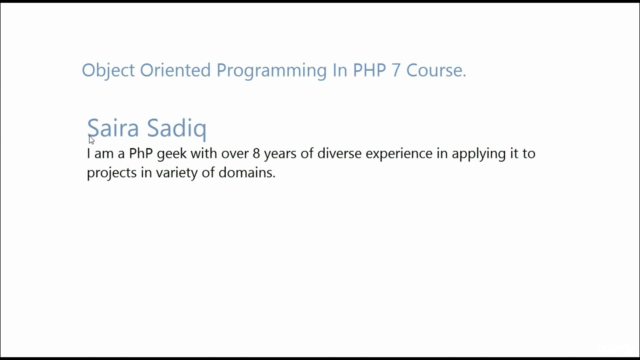
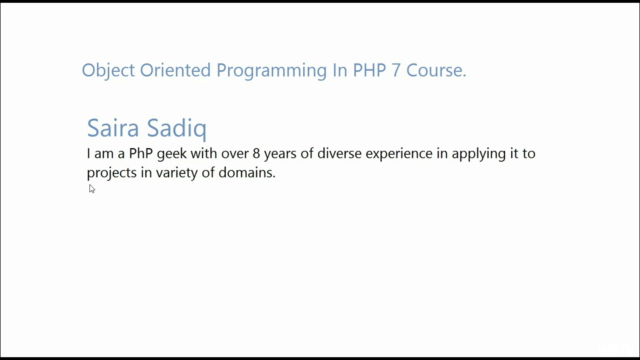
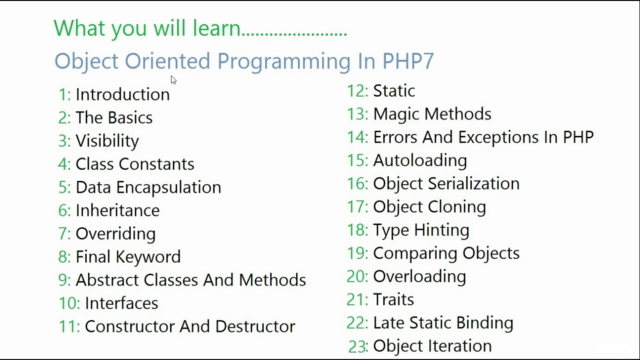
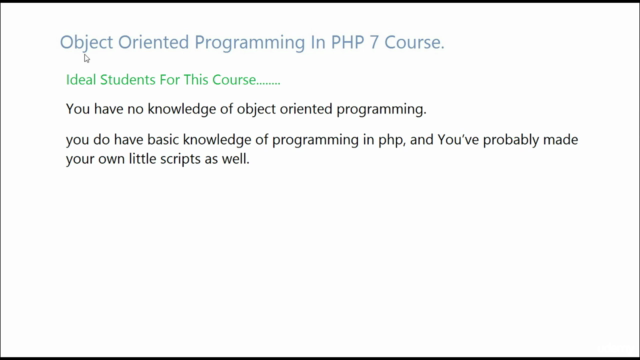
Loading charts...
Comidoc Review
Our Verdict
With a strong focus on advanced OOP concepts and real-world applications, this course is an excellent resource for PHP developers who wish to expand their knowledge of object-oriented programming. Although some familiarity with basic programming principles and PHP syntax are assumed, learners from various skill levels will find the clear explanations and straightforward code examples valuable. While occasional grammar errors may distract some learners, they do not detract significantly from the overall educational experience. Despite limited interaction, the course offers a well-rounded view of OOP in PHP7, making it deserving of its 4.44-star rating.
What We Liked
- Comprehensive coverage of OOP in PHP7, including advanced topics and real-world examples.
- Instructor is knowledgeable and presents complex concepts clearly with simple code samples.
- Well-organized course structure helps learners follow lessons without feeling bored or overwhelmed.
- Excellent resource for understanding OOP principles and applying them to PHP development.
Potential Drawbacks
- Although rare, there were instances of grammar errors and misspellings in the course material.
- Course assumes some familiarity with programming concepts and PHP syntax; not ideal for absolute beginners.
- Limited interaction due to the lack of quizzes or practical assignments; learners may benefit from additional assessment tools.
- A few students have reported slow response times for questions asked in the course.